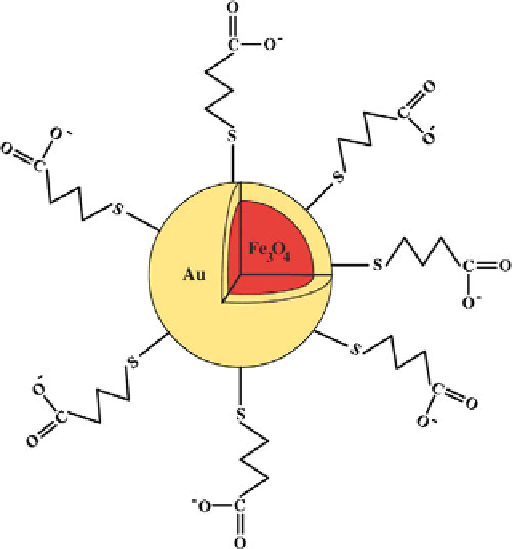Biomedical Engineering Reference
In-Depth Information
Fig. 16 Gold-coated ferrite nanoparticles can be attached to functional groups through Au-S
bonds. (Credit: Charles O'Connor)
gold salts in aqueous, organic phase, or in two phases. However, the high surface
energy of gold nanoparticles makes them highly reactive and, as a result, they
undergo aggregation. The presence of an appropriate stabilizing agent prevents
particle agglomeration by binding to the particle surface to impart high stability and
also provides rich linking chemistry if it acts as a functional group for
bioconjugation. Nanoparticles based on gold chemistry have attracted significant
research and practical attention recently. They are versatile agents with a variety of
biomedical applications, including use in highly sensitive diagnostic assays, ther-
mal ablation, and radiotherapy. Surface conjugation of antibodies and other
targeting moieties is usually achieved by adsorption of the ligand to the gold
surface. Coated ferrite nanoparticles can be attached to functional groups through
Au-S bonds, as shown in Fig.
16
.
Surface adsorption, however, can denature the proteins or, in some cases, limit
the interactions of the ligand with the target on the cell surface due to steric
hindrance. Additionally, for systemic applications, long-circulating nanoparticles
are desired for passive targeting to tumors and inflammatory sites. Surface
functionalization of gold nanoparticles has been carried out by using a hetero-
bifunctional PEG spacer for intracellular tracking and delivery [
68
].

